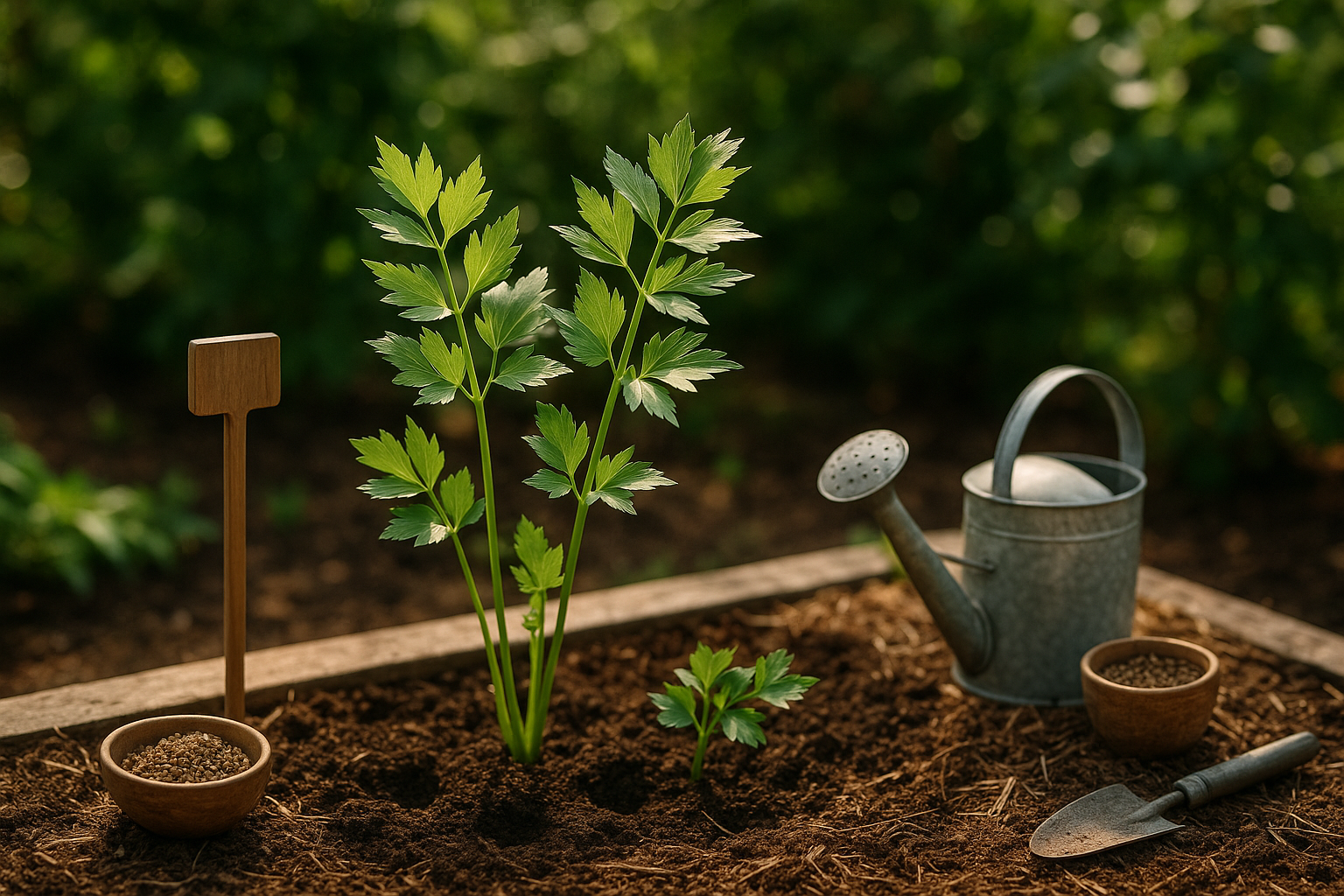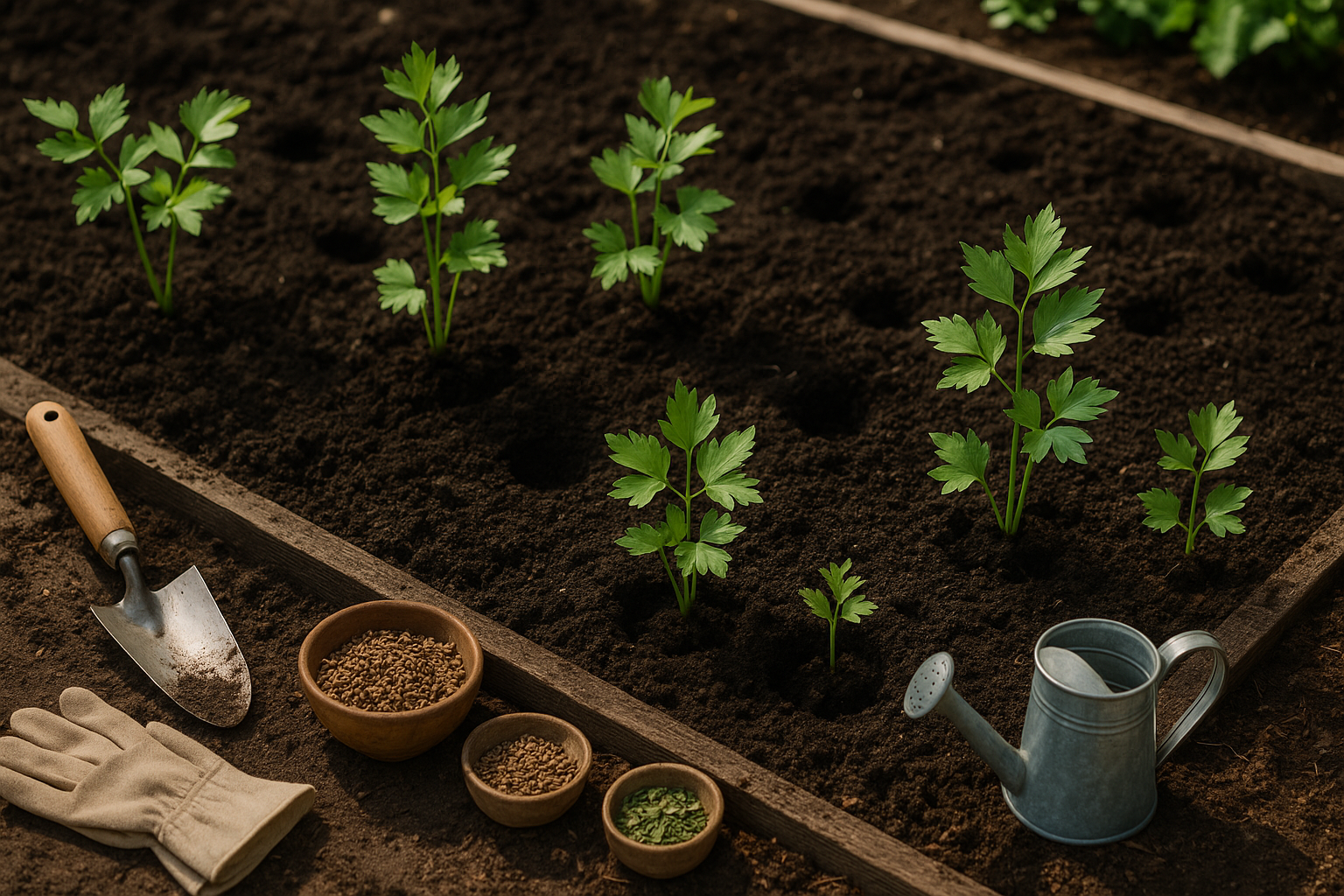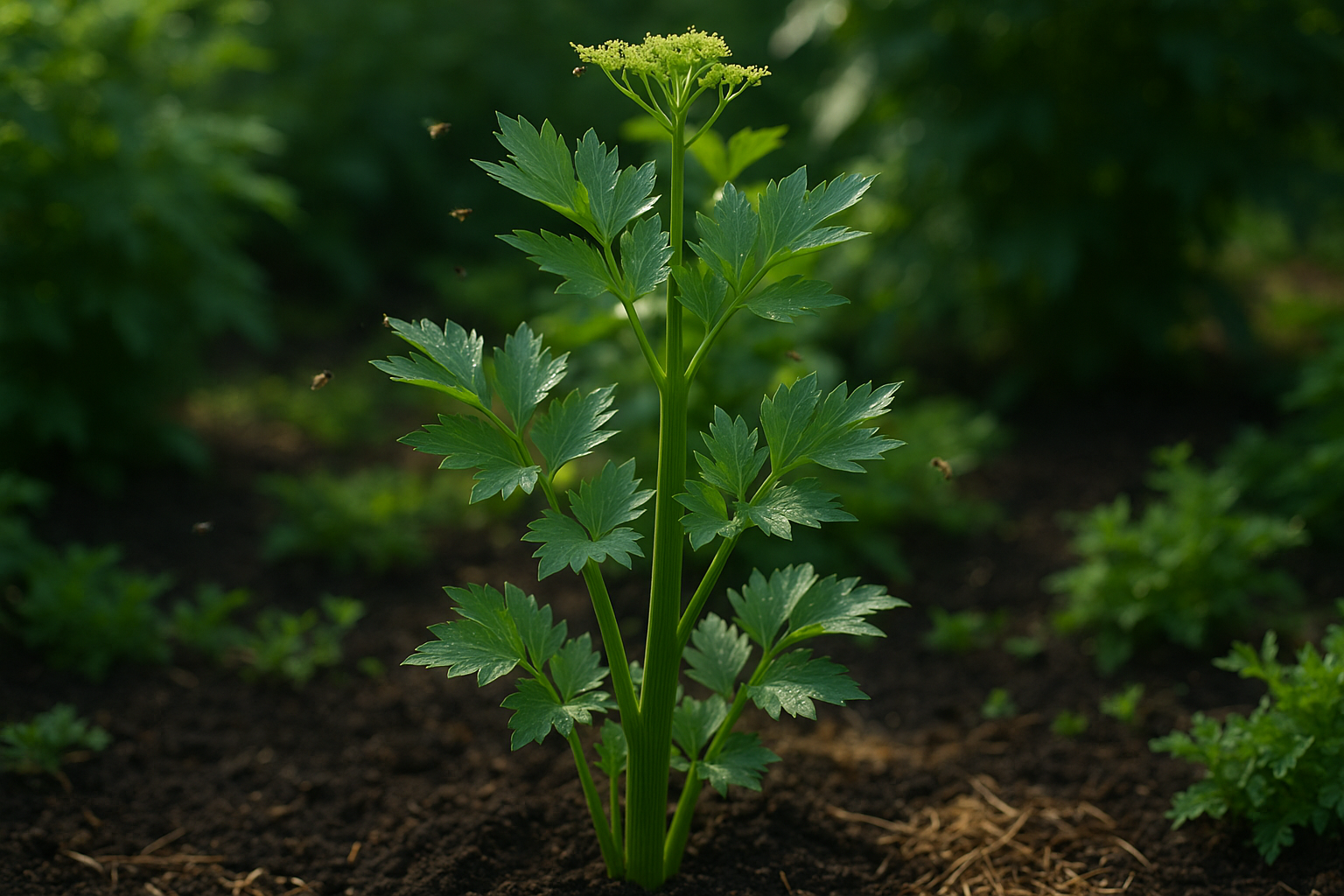Introduction to Lovage
Understanding lovage’s sunlight needs is crucial if you want to add this unique and underrated herb to your garden. Lovage (Levisticum officinale) is a tall, perennial herb that resembles celery both in flavor and appearance, making it a favorite among cooks and herbalists alike. You can use the crisp stems as a savory addition to soups or stews, and the leaves, seeds, and roots also have culinary and medicinal value—some even use lovage tea to soothe digestion.
Gardeners treasure lovage for its robust growth, low maintenance, and the fact that it attracts pollinators, which can benefit your other plants too. However, one of the biggest questions among both beginner and experienced gardeners is whether lovage thrives best in full sun or shade. Getting the lovage sunlight needs right can mean the difference between a towering, lush plant or a spindly shadow of what it could be.
In this post, we’ll explore the ideal light conditions for growing healthy lovage, discuss how sunlight (or lack thereof) affects its flavor and growth, and share practical tips for success in different climates and garden spaces. Whether you’re growing lovage for culinary adventures or its historical uses in herbal remedies, understanding its preferred environment will set you on the path to a thriving harvest.
Light Requirements for Lovage

In gardening, “full sun” means a spot receives at least six hours of direct sunlight daily, while “shade” refers to areas getting less than four hours of sunlight or only filtered/indirect light throughout the day. According to most herb experts and extension services, lovage thrives best in full sun, growing tall and lush with the strongest flavor in its stems and leaves.
However, lovage is also known for its hardiness and can tolerate partial shade, especially in hotter climates where afternoon sun can be intense. In gardens with dappled or partial shade—meaning the plant gets around three to six hours of sunlight—lovage may grow a bit longer and leggier with a milder flavor but will still produce well enough for kitchen use.
If you live in a cooler northern climate, plant your lovage in the sunniest spot available to maximize growth and harvest. For gardeners in regions with scorching summers, consider placing lovage where it gets morning sun but is protected from the harsh afternoon rays, such as along a building’s east side or under the filtered canopy of taller plants.
Using mulch around the base helps conserve moisture, which is especially beneficial if your plant receives high sun exposure. Adapting these light preferences to match your regional climate ensures your lovage remains healthy and productive, balancing robust growth with tender leaves no matter where you garden.
Temperature, Soil, and Water
Temperature and air circulation play a critical role in the well-being of lovage, a hardy perennial that thrives best in cool, temperate climates. Lovage prefers daytime temperatures between 60–70°F (15–21°C) and is happiest when protected from harsh heat or sudden frosts.
Good airflow around your plants is essential—planting lovage in a spot with ample space helps prevent fungal diseases and reduces the risk of mildew.
When it comes to soil, lovage likes rich, loamy earth with excellent drainage. Soggy soils can easily rot the roots, so always avoid planting in low-lying, waterlogged spots. Enhancing the soil by mixing in compost or well-rotted manure supports the plant’s vigorous growth, while consistently moist (but not wet) soil will keep it happy.
Full sun is ideal for maximum flavor and robust growth, but in hotter regions, providing partial shade during the afternoon can help regulate moisture needs and prevent wilting. Mulch around the base of your plants with straw or shredded bark to retain moisture and keep the roots cool.
Regularly check soil by sticking your finger an inch below the surface—if it feels dry, it’s time to water. Water at the base rather than overhead to deter fungal problems.
By monitoring temperature, airflow, and soil conditions, you can maintain the balanced environment lovage needs to thrive, resulting in lush foliage and strong flavors for your kitchen.
Planting and Caring for Lovage

For the healthiest lovage plants, start by sowing seeds or transplanting young plants outdoors in early spring, once the soil is workable. Space plants about 24 inches apart since lovage matures into a large, leafy perennial. Plant seeds roughly ¼ inch deep. If starting with transplants, be gentle with their roots—lovage doesn’t like disturbance.
Choose a location that receives at least six hours of sunlight for optimal flavor and growth, though lovage also tolerates partial shade. In full sun, water regularly to keep the soil moist but not soggy, and add a layer of mulch to help retain moisture and prevent the roots from overheating. In partial shade, the plant may grow leggier but will require less frequent watering.
Keep an eye out for yellowing, droopy leaves, which can signal excessive sun or drought—remedy this by providing extra water and shade during the hottest part of the day. On the other hand, pale, spindly growth often points to too much shade. If you notice this, try moving the plant to a sunnier spot or trim back nearby plants that may be blocking the light.
Regularly remove faded leaves and flower stalks to encourage bushier growth and prolong the harvest season. With the right balance of sun, soil moisture, and light pruning, lovage will reward you with a lush, aromatic addition to your garden that keeps coming back year after year.
Common Challenges
Growing lovage can be rewarding, but gardeners often face hurdles like aphids, leaf miners, slugs, and fungal issues such as powdery mildew and root rot—especially under unsuitable lighting conditions. Too much shade leaves lovage vulnerable to fungal diseases because excess moisture lingers on leaves and soil, creating a perfect environment for rot and mildew to spread. On the other hand, intense, direct sun without adequate soil moisture can stress the plant and attract pests searching for weakened hosts.
Healthy, well-sunned plants in soil that drains freely are less likely to suffer outbreaks. To prevent problems, site lovage where it receives at least four to six hours of morning or dappled sun, ideally with airflow around plants to keep leaves dry.
Check leaves regularly for pests; hand-pick visible bugs and use insecticidal soap for aphids if needed. Water early in the day to allow foliage to dry, and avoid overhead watering to discourage mildew. Mulching helps keep soil moisture consistent without encouraging rot.
Finally, remove any diseased leaves as soon as they appear and rotate crops each year to reduce persistent pest populations. By adjusting sunlight, watering habits, and garden hygiene, you can keep lovage healthy and resilient all season.
Companion Planting and Harvesting Tips for Lovage
Pairing lovage with the right companions can boost both its health and your garden’s overall productivity. Lovage thrives in partial shade but can tolerate full sun if the soil stays moist, making it a great neighbor for shade-loving herbs like chives, mint, and parsley—plants that won’t compete for light. Avoid placing lovage near sprawling vegetables like squash, which can crowd its tall stalks.
For a flavorful, productive harvest, wait until your lovage is at least a foot tall before cutting stalks; trim the outer stems first, leaving the central growth to ensure new leaves keep coming. Harvest in the cool morning for crisp, aromatic leaves, and always use sharp scissors to avoid bruising.
You’ll get the best flavor when lovage grows in partial shade—the leaves stay tender and develop a milder, celery-like taste compared to the stronger, sometimes bitter flavor found in plants grown in intense sun. Mulch around your lovage to keep soil moisture consistent, and water regularly to prevent wilting during hot spells.
Finally, snip off any flower stems as they appear to extend leaf production, and thin out thick patches to improve airflow and reduce disease risk. These simple tips help keep your lovage robust, lush, and bursting with flavor all season long.
Conclusion
Lovage thrives best in a spot that receives full sun to partial shade, making it surprisingly adaptable in most gardens. If your space gets at least six hours of sunlight daily, you’re off to a great start—but lovage will also tolerate a bit of dappled shade, especially in hotter climates.
Gardeners should remember that every yard is unique; try planting lovage in a few different areas and observe how it responds over a season. Don’t be afraid to move your plant if it seems unhappy—lovage is quite resilient!
Whether you’re just starting your herb garden or looking to diversify, remember that gardening is all about learning, experimenting, and having fun. Trust your instincts, make small adjustments, and enjoy watching your lovage flourish. With a little observation and care, you’ll find the perfect home for this flavorful, easygoing herb in your garden.
